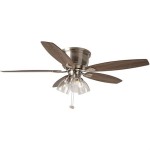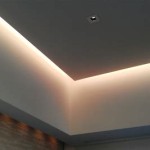Essential Aspects of Replacing a Ceiling Light Housing
Replacing a ceiling light housing is a crucial aspect of maintaining the safety and functionality of your home's lighting system. Neglecting essential aspects can lead to electrical hazards, poor lighting, and reduced aesthetic appeal. Understanding the key elements involved in this task is paramount to ensuring a successful and safe outcome.
This article will delve into the essential aspects of replacing a ceiling light housing, providing guidance on selecting the right housing, preparing for installation, and carrying out the replacement process safely and effectively. We will cover factors such as the type of ceiling, electrical safety, compatibility, and the need for professional assistance.
1. Selecting the Right Housing
Choosing the right ceiling light housing is the foundation of a successful replacement. Consider the type of ceiling your light fixture will be mounted on and ensure the housing is compatible with the ceiling material. Drywall ceilings typically require different housings than suspended or plaster ceilings.
2. Electrical Safety
Before any electrical work, switch off the power at the circuit breaker and verify that the circuit is indeed dead using a voltage tester. Disconnect the wires from the old housing, taking note of their color coding for correct reconnection later.
3. Compatibility
Ensure that the new ceiling light housing is compatible with your light fixture. This includes matching the housing's size, shape, and mounting mechanism. Compatibility issues can lead to improper installation, safety hazards, or poor lighting performance.
4. Preparing for Installation
Prepare the ceiling by marking the location where the new housing will be mounted. Use a stud finder to locate studs for secure fastening. Drill pilot holes and secure the housing firmly in place using appropriate screws or bolts.
5. Reconnecting the Wires
Reconnecting the wires correctly is crucial for proper lighting operation. Match the wire colors (typically black, white, and green) and securely fasten them to the corresponding terminals in the new housing. Use wire nuts or electrical tape to insulate the connections.
6. Finishing Up
Once the wires are connected, double-check all connections for tightness and insulation. Turn on the power at the circuit breaker and test the light fixture to ensure it is working correctly. If you encounter any issues, do not hesitate to seek professional assistance.
Replacing a ceiling light housing involves several key aspects that must be carefully considered to ensure safety, functionality, and aesthetic appeal. By following the essential steps outlined above, you can successfully replace a ceiling light housing and enhance the lighting in your home.

How To Replace Install A Light Fixture The Art Of Manliness

How To Install Ceiling Light Homeserve Usa

How To Replace An Old Fluorescent Light Fixture Young House Love

Easy Ways To Replace An Led Recessed Light Bulb 13 Steps

How To Change A Light Fixture

Replacing A Ceiling Fan Light With Regular Fixture Jlc

How To Replace An Old Fluorescent Light Fixture Young House Love

Mounting Light Fixtures Fine Homebuilding

How To Guide Replace Recessed Lighting Flip The Switch

Replace Recessed Light With A Pendant Fixture
Related Posts








